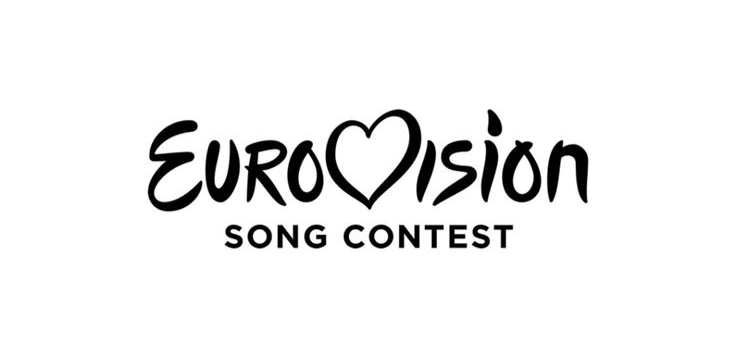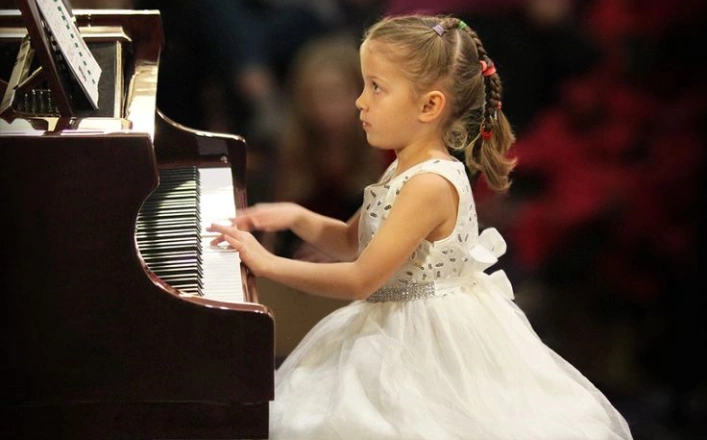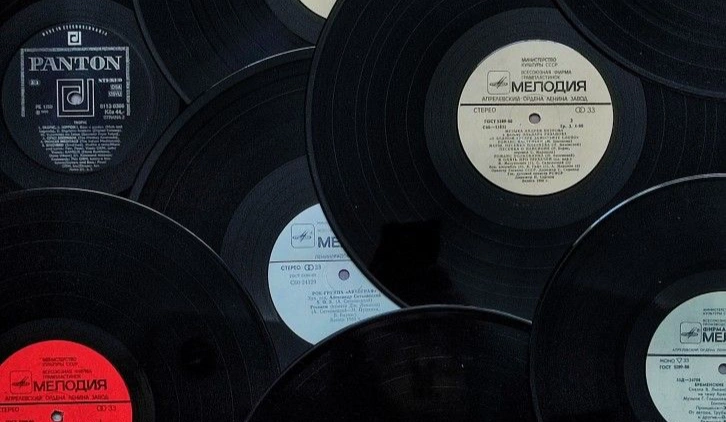Blues Posts on Crowch
Georgia is the undisputed leader of Junior Eurovision. After its victory in 2024, the country is once again preparing to host the contest on its home stage, showcasing to the world its musical mastery and the potential of its young performers.
🏆 A Home Stage: Tbilisi in the Spotlight Again
In 2025, Junior Eurovision will take place on 13 December in Tbilisi, at the Small Hall of the Olympic Palace — the same venue that hosted the contest in 2017. This marks the second time Georgia will welcome Junior Eurovision, confirming its reputation as an experienced and capable host.
GPB, the Georgian Public Broadcaster, has announced that all young artists, their families, and delegations will arrive well in advance to rehearse, participate in cultural events, and experience the warm hospitality of the country.

🌟 From Victory to Hosting
The success of Andria Putkaradze in 2024 with the touching ballad “To My Mom” opened the door for Georgia’s next big step. Andria’s story — a boy from Batumi who started singing at the age of two, learned piano, and was raised by his grandparents — touched the hearts of audiences across Europe. His victory, the fourth in Georgia’s history, made the country the record-holder of Junior Eurovision.
👧👦 Who’s Next: Selection Through Ranina
Georgia will once again select its representative through Ranina, the national children’s talent show that has already produced several successful JESC participants.
For 2025, ten young contestants have been confirmed:
- Mariam Muzashvili (9)
- Sandro Abesadze (11)
- Sesili Lemonjava (11)
- Gabriel Bodaveli (12)
- Anita Abgariani (10)
- Barbara Sandikidze (11)
- Demetri Maisuradze (10)
- Lile Mchedlishvili (8)
- Lazare Kapanadze (11)
- Nia Lashkhia (11)
This lineup demonstrates Georgia’s continued commitment to nurturing child talent and giving them a platform to shine on an international stage.
🌍 Why This Matters for Georgia
- Cultural Leadership: Hosting the contest strengthens Georgia’s role as a hub for creativity and youth development.
- Social Mission: The stories of these children become symbols of national pride and inspiration.
- International Dialogue: The event provides an opportunity to showcase Georgian hospitality and culture while strengthening ties with Europe.
🔮 What to Expect
In the coming months, we can look forward to:
- The announcement of the official slogan, stage concept, and hosts.
- A rich cultural program leading up to the live show.
- The energy, authenticity, and heartfelt performances that Georgia is known for.
🏆 Conclusion
Georgia is once again preparing for a unique musical celebration — this time as the host of Junior Eurovision 2025. From past victories to the promise of future stars, the country remains true to its tradition of supporting young performers, staying authentic, and bringing musical magic to the international stage.

In 2017, Georgia became the focus of attention for Europe and the world: Tbilisi hosted the Junior Eurovision Song Contest. This was a historic event not only for the country’s music scene but also for its cultural image. For the first time, such a large-scale contest was held in Georgia, becoming a symbol of openness, hospitality, and the country’s aspiration to be part of the wider European cultural community.
Why Georgia?
The decision to hold the contest in Tbilisi was a logical one. Georgia had won Junior Eurovision multiple times, becoming a record-holder in the number of victories. These consistent successes and the brilliant performances of young artists convinced the European Broadcasting Union to entrust the country with hosting the prestigious event.
The Venue — Tbilisi Sports Palace

The main venue was the renovated Tbilisi Sports Palace, located in the heart of the capital. It is one of the largest arenas in the country, accommodating thousands of spectators. For the contest, the arena was equipped with cutting-edge technology: modern lighting, a dynamic stage design, multimedia screens, and acoustics that met the standards of the world’s biggest shows.
A Festive Atmosphere
During the contest, Tbilisi completely transformed. The city was filled with delegations from different countries, journalists, and tourists. Cultural events, concerts, and workshops took place in the city center. Georgian hospitality was felt everywhere — from traditional cuisine to the warm and friendly atmosphere in the streets.

The Importance for the Country
Hosting Junior Eurovision was both a cultural and political gesture. First, it proved that Georgia was capable of organizing an event of international scale. Second, the country showcased its identity, presenting European audiences with its rich musical and artistic heritage.
Inspiration for the Young Generation
This contest held particular significance for children and teenagers. Thousands of young Georgians were inspired by the stories of their peers performing on stage in front of all of Europe. For many, it became a motivation to pursue music, art, and to dream of performing on big stages.
International Recognition
The organization of the contest received high praise from international guests and media. Tbilisi proved itself to be a modern, dynamic, and hospitable city, capable of becoming a cultural hub of the region. For Georgia’s image, this was a major step forward: the country demonstrated not only its talents but also its ability to be a reliable partner in international projects.
Conclusion
Junior Eurovision in Tbilisi became an event forever etched in the country’s history. It proved that music unites people, and that small Georgia can make a loud impact on the great European stage. Today, when recalling this event, Georgians proudly say: “We did it, and we are ready for new heights.”
For Georgia, Eurovision has long become something more than just an international contest. It is a unique stage where music turns into the language of diplomacy, and every performance becomes an opportunity to declare national culture. Over the years, the country has gone from a bright debut to leadership in Junior Eurovision, and this journey reflects not only the success of individual artists but also the development of Georgia’s entire music industry.
Debut and Rapid Start
In 2007, Georgia appeared at Eurovision for the first time. Young singer Sopho Khalvashi performed Visionary Dream, where Western sound blended with national motifs. For the international audience, this was a revelation: the country introduced itself as modern while carefully preserving its traditions.
Shaping a National Image
Each Georgian performance at Eurovision is an attempt to balance European pop culture with Georgian uniqueness. For example, Sofia Nizharadze (Shine, 2010) and the band Eldrine (One More Day, 2011) not only achieved high results but also demonstrated that Georgian performers have their own style — powerful energy, emotional depth, and original stage presence.

Challenges and Trials
Not every year was successful. Georgia sometimes failed to reach the final, faced criticism, and struggled to find new styles. Yet even these difficulties became valuable lessons. Each artist on stage contributed to the growth of Georgian pop music and opened new opportunities for younger musicians.
Politics and Culture
The country’s Eurovision story is also linked to political events. The withdrawal in 2009 due to disagreements with contest rules became a symbol that Eurovision is not only about music but also a platform where global views collide. However, despite such episodes, Georgia has always returned to the stage, proving that the main goal is to share its culture with Europe.
Junior Eurovision — A Special Pride
While victory in the adult contest has not yet been achieved, in Junior Eurovision Georgia became a true leader. Four victories made the country a record holder. This is not only a reason for national pride but also proof that a whole generation of talented young performers is growing up, ready to represent Georgia on the “adult” stage in the future.

Why It Matters for the Country
Eurovision helps shape Georgia’s cultural image abroad. Each performance becomes a calling card that tells millions of viewers about the country’s language, music, and heritage. For the younger generation, participation in the contest serves as an example that Georgian culture can be both modern and in demand worldwide.
Conclusion
Today, Eurovision for Georgia is a stage for dialogue, inspiration, and ambition. Even without a victory in the adult contest yet, the country’s many vibrant performances, along with leadership in Junior Eurovision, prove that Georgia has its own voice — and it will certainly be heard.
Eurovision is not only the largest international song contest, but also a cultural platform where countries showcase their art, traditions, and contemporary music. For Georgia, participation in this project has become an important opportunity to present itself to the world, demonstrate national identity, and reveal talents that shape the country’s image on the global stage.
First Steps
Georgia made its Eurovision debut in 2007. The country first appeared on the European stage with Sopho Khalvashi’s song Visionary Dream. The debut was successful: Georgia immediately reached the final and secured a respectable position. This beginning inspired both the audience and musicians within the country.
Best Results
Georgia’s greatest successes came in 2010 and 2011. In 2010, Sofia Nizharadze with the song Shine took 9th place in the final, impressing audiences with her powerful vocals and striking stage image. Just a year later, the band Eldrine with One More Day repeated this result, once again proving that Georgia could compete with Europe’s strongest contenders.
Challenging Years and New Hopes
After several unsuccessful attempts to reach the final, Georgia once again made headlines in 2024. Singer Nutsa Buzaladze with Firefighter qualified for the final, taking 21st place, and rekindled the country’s sense of belonging to the grand contest. In 2025, Mariam Shengelaya represented Georgia with the song Freedom. Although she did not reach the final, her performance was praised for its emotion and modern sound.

Political Scandal
Georgia’s Eurovision story was not without controversy. In 2009, the country withdrew after the European Broadcasting Union refused to accept the song We Don’t Wanna Put In. The jury interpreted its title and lyrics as a political reference to Vladimir Putin, sparking a scandal and Georgia’s boycott. This episode showed that Eurovision is not only about music but also a reflection of political realities.
Junior Eurovision: Georgia’s Leadership
While Georgia has not yet claimed victory in the adult Eurovision, in Junior Eurovision the country is a true leader. Since 2007, Georgia has participated actively and has won four times: in 2008, 2011, 2016, and 2024. This makes it the most successful participant in the history of the competition. Moreover, in 2025 Tbilisi will host the Junior Eurovision final, which will be a major cultural event for the country.
The Meaning of Eurovision for Georgia

For Georgia, Eurovision is more than a contest. It is a way to tell millions of viewers across Europe about its culture, language, and contemporary musical styles. Georgian performances often combine national motifs with modern genres, making them unique and memorable.
Conclusion
Although Georgia has not yet become a winner of the adult Eurovision, its participation has already become part of the contest’s history. Each performance is a step toward strengthening the national music scene and achieving new international success. Victories in Junior Eurovision confirm that Georgian music has a bright future, and new achievements are yet to come.
Music is not only a form of art — it’s also a powerful stimulus for brain development. Modern scientific research confirms that sounds, especially music, can influence a baby’s growth even before birth. By the 16th to 20th week of pregnancy, the fetus begins responding to sounds, and by 26–28 weeks, it can distinguish rhythms, tones, and even recognize the mother’s voice.
When an expectant mother listens to calming, harmonious music — particularly classical or natural sounds — her stress levels decrease, her heartbeat stabilizes, and her breathing slows. These physiological effects positively impact the baby: the fetal heart rate becomes steadier, stress hormones like cortisol are reduced, and the baby experiences a sense of safety and calm.
Music also stimulates the baby’s sensory and neurological development. Rhythm and melody activate the auditory areas of the brain, promoting the formation of neural pathways. Some studies suggest that regular exposure to music during pregnancy may influence future cognitive abilities — such as memory, language development, and concentration.
Interestingly, newborns can recognize melodies they heard in the womb. This suggests that musical exposure before birth leaves a lasting subconscious imprint. Familiar melodies can later comfort and soothe the baby, creating a sense of continuity and emotional security.
However, it’s important to note that loud, sharp, or aggressive music may cause discomfort or restlessness. The best choices are gentle compositions with steady rhythms and positive emotional tones.

Music is more than a form of artistic expression — it’s a profound and powerful tool that can influence brain development, even before a baby is born. Today’s scientific research supports what many cultures have long intuited: that sound, particularly music, plays a meaningful role in fetal development and early emotional bonding.
By the 16th to 20th week of pregnancy, the fetal auditory system begins to function, allowing the baby to respond to external sounds. Around 26 to 28 weeks, the fetus becomes increasingly sensitive to sound and can distinguish between different rhythms, tones, and even voices. One of the most important sounds a baby becomes attuned to is the mother’s voice — a sound that becomes deeply familiar, comforting, and foundational to early bonding.
When an expectant mother listens to calming, harmonious music — such as soft classical pieces, lullabies, or natural ambient sounds (like ocean waves or birdsong) — her body often responds with reduced stress levels, more stable heart rate, lower blood pressure, and slower, deeper breathing. These physiological changes create a more tranquil internal environment for the baby, with benefits including:

- A steadier fetal heart rate
- Lower levels of stress hormones such as cortisol
- A general sense of safety and calm, communicated through hormonal and physiological pathways
In essence, music not only soothes the mother — it also soothes the baby.
But the impact of music doesn’t stop at emotional regulation. Neurologically, music serves as a powerful stimulus for fetal brain development. Rhythmic patterns, pitch changes, and melodic structures activate the auditory cortex of the developing brain. This early stimulation helps in forming neural connections, laying the groundwork for cognitive skills later in life. Some studies suggest that babies who were regularly exposed to music in utero may show earlier development in areas such as:
- Language and verbal memory
- Concentration and attention span
- Emotional self-regulation
Perhaps one of the most fascinating findings is that newborns can recognize and respond to melodies they heard in the womb. This means that prenatal exposure to music creates a kind of subconscious memory, which can later be used to comfort and soothe the baby. Familiar tunes played during pregnancy can become part of a baby's emotional landscape — helping them feel connected, secure, and calm even after birth.
However, it’s important to be mindful of the type of music used during pregnancy. Loud, chaotic, or jarring music — especially with sudden changes in volume or tempo — can create unease or even disturb the baby’s rest patterns. The most recommended music for expectant mothers includes:
- Soft classical compositions (like Mozart or Debussy)
- Peaceful instrumental music
- Gentle lullabies
- Nature sounds, such as rainfall or birdsong
- Culturally meaningful music that evokes positive feelings
It’s also helpful to keep the volume moderate — around 60 to 70 decibels (roughly the sound of a normal conversation). Using headphones on the belly is not advised, as it may overstimulate the baby’s developing ears.
Music during pregnancy is not just entertainment — it’s connection. It nurtures emotional bonds, supports brain development, and creates a shared experience between mother and child. Whether through soft singing, gentle melodies in the background, or simply humming during daily routines, these musical moments become part of a baby’s first world — one filled with warmth, rhythm, and love.
In the symphony of life, music is one of the earliest and most meaningful notes.
Vinyl records are more than just a way to listen to music — they are cultural icons and a living archive of musical history. Despite the rise of digital formats, vinyl has seen a remarkable comeback in recent years.
The first vinyl records emerged in the mid-20th century as a more durable and better-sounding alternative to shellac discs. With improved fidelity and the advent of stereo recording, vinyl quickly became the dominant format. For generations, classic albums by The Beatles, Pink Floyd, or Led Zeppelin were experienced through the turntable.
Over time, vinyl was replaced by cassettes, then CDs, and finally digital streaming. Yet vinyl has something unique: a warm, analog sound that digital formats can’t fully replicate. That sound is often described as richer, fuller, and more emotional.
Vinyl is also appreciated for its aesthetics. The large, detailed album covers are artworks in themselves and highly collectible. The act of listening — selecting a record, removing it from its sleeve, placing it on the turntable, and gently dropping the needle — turns music into a mindful ritual.
Today, vinyl is back in style. It's being embraced not just by audiophiles and collectors, but by younger generations looking for authenticity and tangible musical experiences. Many artists release vinyl editions of their albums as a sign of quality and connection to their audience.
In essence, vinyl is not just a format — it's a culture. It brings generations together and reminds us of the value of truly listening.

A Brief History of Vinyl
Vinyl as we know it today first gained popularity in the mid-20th century, evolving from earlier shellac 78 RPM records. With the development of long-playing (LP) 33 1/3 RPM records and 45 RPM singles, vinyl became the dominant music format throughout the 1950s, '60s, and '70s. The improvements in fidelity, durability, and stereo recording technology made vinyl the go-to medium for music lovers and musicians alike.
From The Beatles and David Bowie to Pink Floyd, Aretha Franklin, and Led Zeppelin, entire generations discovered their favorite albums through the grooves of vinyl. It was more than sound — it was an experience.
As technology progressed, vinyl was gradually overtaken by cassette tapes, compact discs, and eventually digital files and streaming platforms. The convenience of carrying thousands of songs in your pocket was undeniable. Yet, something was lost in the transition — the tactile engagement, the richness of analog sound, and the emotional connection that came from owning a physical piece of music.
🔊 The Sound of Warmth and Imperfection
What makes vinyl so beloved, even in the digital age? The sound. Vinyl offers a warm, analog quality that digital formats often struggle to replicate. Audiophiles describe it as richer, deeper, and more organic, with subtle imperfections — like soft crackles or pops — that enhance the listening experience, making it feel alive and personal.

Unlike compressed digital files, vinyl preserves the dynamic range of a recording. Music feels fuller, more textured, and more intimate. When played on a quality turntable with good speakers, vinyl can make you feel as if you're right there in the studio with the artist.
🎨 Aesthetic and Ritual
Vinyl also has an undeniable visual and tactile appeal. The large album covers serve as canvases for iconic artwork — often turning records into collectibles and visual time capsules of cultural moments. Liner notes, lyrics, and inner sleeve designs add to the story, inviting the listener to engage more deeply with the music.
But perhaps what makes vinyl truly unique is the ritual of listening. Selecting a record, carefully removing it from its sleeve, placing it on the turntable, adjusting the tonearm, and dropping the needle — these steps require intention. Unlike algorithm-driven playlists, vinyl encourages presence. You don’t just hear the music — you participate in it.
📀 The Vinyl Revival
In recent years, vinyl has made a remarkable comeback. It’s no longer just for collectors and nostalgia-seekers. Young listeners, raised in the digital era, are discovering vinyl as a way to connect more meaningfully with music. Many artists now release limited-edition vinyl alongside digital formats — signaling quality, artistry, and a desire for tangible connection with fans.
Independent record stores, once in decline, are thriving again. Events like Record Store Day celebrate vinyl culture and unite music lovers around the world. Even major labels and pop stars are embracing the format, recognizing its growing cultural relevance.
🌍 More Than Music: A Community and a Culture
Vinyl is not just a format — it's a movement. It bridges generations, bringing grandparents, parents, and teenagers together over shared favorites. It fosters community through crate digging, listening parties, and music conversations offline.
In a world that often values speed, convenience, and disposability, vinyl invites us to slow down and savor. It teaches us to listen deeply, to appreciate craftsmanship, and to see music as more than background noise — but as art, emotion, and memory pressed into wax.
Music is far more than entertainment — it has a profound impact on the nervous system and brain function. Neuroscience research shows that listening to music activates multiple areas of the brain simultaneously, including the auditory cortex, the limbic system (which regulates emotion), motor areas, and even regions responsible for memory and focus.
When we hear music, sound waves are processed by the brain, where nerve cells — neurons — interpret rhythm, pitch, and tone. Different types of music influence the brain in different ways. Slow, melodic music reduces stress by lowering cortisol levels, slowing heart rate, and encouraging deep breathing — leading to relaxation. In contrast, fast-paced music can stimulate alertness, enhance mood, and increase cognitive performance.
Music also supports neuroplasticity, the brain’s ability to reorganize and form new neural connections. This is crucial for rehabilitation after injury and plays a key role in learning and memory. That’s why musical training is often used in therapy for stroke survivors and people with neurological conditions.

Music is far more than a form of entertainment — it is a powerful biological force that shapes brain function, emotional regulation, and mental health. For centuries, music has been used to inspire, comfort, and connect people. But thanks to advances in neuroscience, we now understand that music doesn’t just affect how we feel — it directly influences how our brain operates.
When we listen to music, our brains light up in multiple areas at once. Research using fMRI and EEG scans shows that music activates the auditory cortex, where sound is processed, but also the limbic system, which governs emotion; the motor cortex, linked to movement and rhythm; and the prefrontal cortex, associated with focus, memory, and decision-making. This whole-brain activation makes music a unique cognitive stimulus — few other activities engage such a wide neural network.

🎵 Sound as a Language for the Brain
Sound waves enter the ear and are transformed into electrical signals that the brain interprets as rhythm, melody, harmony, and lyrics. This process engages billions of neurons in synchronized firing patterns. The brain identifies tempo, pitch, tone, and structure, recognizing familiar tunes and creating associations that can trigger vivid memories or intense emotions.
Different types of music can produce different physiological and psychological effects:
- Slow, melodic, and harmonic music (such as classical, ambient, or instrumental) has been shown to lower cortisol, the body’s primary stress hormone. It can reduce blood pressure, slow heart rate, and encourage deep breathing, creating a natural state of relaxation.
- In contrast, upbeat or fast-tempo music (such as pop, dance, or energetic classical pieces) can increase alertness, boost mood, and even enhance cognitive performance, especially in tasks requiring concentration and energy.
🧠 Music and Neuroplasticity
One of the most fascinating aspects of music is its ability to support neuroplasticity — the brain’s remarkable capacity to adapt, reorganize, and form new neural pathways. This is particularly important in contexts such as:
- Stroke recovery, where musical rhythm can help retrain motor movement
- Parkinson’s and Alzheimer’s therapy, where music improves memory recall and emotional regulation
- Speech therapy, using rhythm and melody to aid language acquisition and vocal control
Musical training — even at a basic level — has been shown to enhance memory, attention, language skills, and executive function. Children who study music often show improved academic performance, while adults who engage with music regularly tend to experience slower cognitive decline with age.
🎶 Music, Emotion, and Reward
Music also taps directly into the brain’s reward system, particularly by stimulating the release of dopamine — the neurotransmitter responsible for pleasure, motivation, and emotional highs. This explains the goosebumps, tears, or joywe sometimes feel when a song resonates deeply. Unlike many rewards, music’s effects can be experienced without any physical stimulus — it’s purely neurological.
Even more remarkably, music can synchronize brainwaves, bringing them into alpha or theta states associated with meditation, creativity, and flow. This helps explain why music is so effective during study sessions, workouts, meditation, or sleep routines.
🌱 A Tool for Mental Health and Healing
Today, music therapy is used in hospitals, rehabilitation centers, schools, and wellness programs worldwide. It helps people cope with anxiety, depression, trauma, and chronic pain, offering a non-invasive, deeply personal path to healing.
Whether through listening, playing, singing, or dancing, music allows the brain to process emotions, express the inexpressible, and build mental resilience.
In the end, music is not just something we hear — it’s something our brain understands, responds to, and even grows from. It enhances our mood, strengthens our memory, calms our stress, and brings joy in the purest form.
Music is medicine. Music is memory. Music is mind.
Additionally, music triggers the release of dopamine, the “feel-good” neurotransmitter linked to pleasure, reward, and motivation. This explains the chills or emotional highs we sometimes feel when listening to a favorite song.Ultimately, music isn’t just an emotional journey — it’s a biological force that shapes brain activity, supports mental health, and can even aid in healing